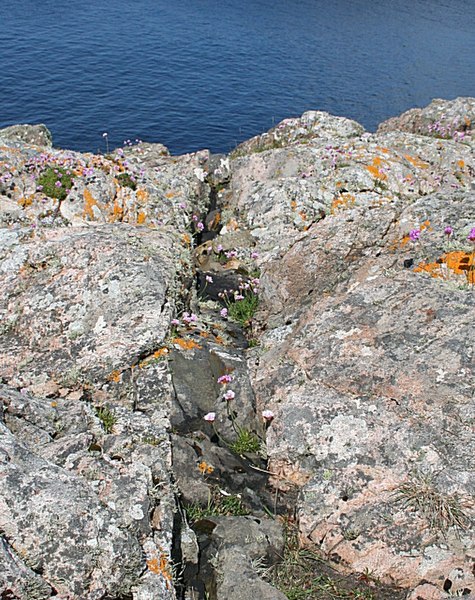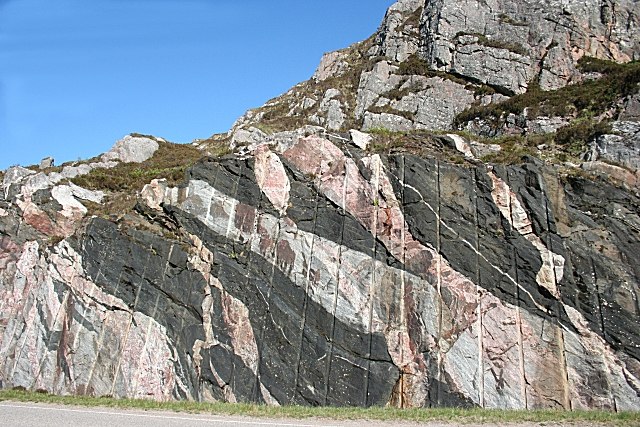The Lewisian complex or Lewisian gneiss is a suite of Precambrian metamorphic rocks that outcrop in the northwestern part of Scotland, forming part of the Hebridean Terrane and the North Atlantic Craton. These rocks are of Archaean and Paleoproterozoic age, ranging from 3.0–1.7 billion years (Ga). They form the basement on which the Torridonian and Moine Supergroup sediments were deposited. The Lewisian consists mainly of granitic gneisses with a minor amount of supracrustal rocks. Rocks of the Lewisian complex were caught up in the Caledonian orogeny, appearing in the hanging walls of many of the thrust faults formed during the late stages of this tectonic event.
Outcrop of weathered Lewisian gneiss, 5 km NW of Lochinver
Undeformed Scourie dyke cutting Lewisian Gneiss, about 1.6 km west of Scourie
Scourie dykes (now foliated amphibolites) cutting grey gneiss of the Scourie complex, both deformed during the Laxfordian tectonic event and cut by later (unfoliated) granite veins - road cutting on the A838 just north of Laxford Bridge
Lewisian Gneiss - Rhiconich, Scotland
The Hebridean Terrane is one of the terranes that form part of the Caledonian orogenic belt in northwest Scotland. Its boundary with the neighbouring Northern Highland Terrane is formed by the Moine Thrust Belt. The basement is formed by Archaean and Paleoproterozoic gneisses of the Lewisian complex, unconformably overlain by the Neoproterozoic Torridonian sediments, which in turn are unconformably overlain by a sequence of Cambro–Ordovician sediments. It formed part of the Laurentian foreland during the Caledonian continental collision.
Outcrop of weathered Lewisian gneiss, 5 km NW of Loch Inver
Well-bedded Torridonian sandstone
Pipe Rock viewed on a bedding surface
Durness Group dolomite exposed at the entrance to Smoo Cave in Durness







